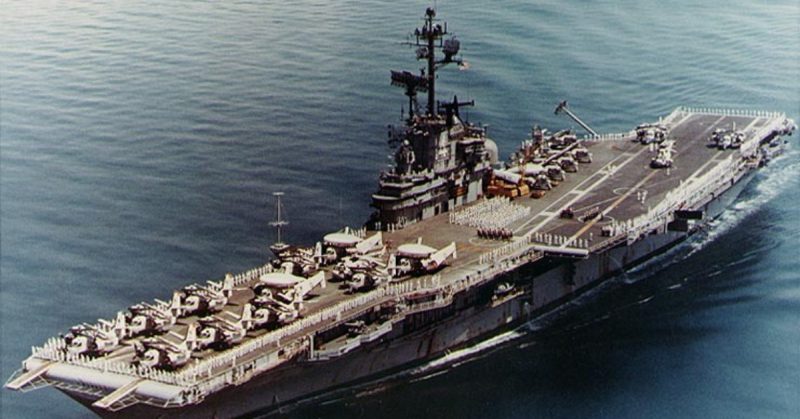USS Bunker Hill was hit by two Japanese Zeroes which were carrying bombs. The explosions killed 390 crewmen.
The Essex-class aircraft carrier was the most produced capital ship in the twentieth century. Twenty-four were built between 1943 and 1950 at shipyards based in Newport News, Philadelphia, Brooklyn, Norfolk and Braintree.
Prior to the Essex class, the US Navy’s carriers were limited in size due to the Washington Naval Treaty of 1922. Japan withdrew from the treaty in 1934 in order to build up its armed forces. This freed the US from the treaty and as a result, in 1940 the US began building carriers larger than their current Yorktown-class ships.
The 30,000-ton Essex (CV-9) was commissioned on December 31, 1942. It was nearly 870 feet long and displaced 31,300 tons. The hull was reinforced with four inches of Special Treatment Steel armor.
It was outfitted with four twin and four single five-inch gun turrets. It had two fire-control radars which allowed Essex to hit targets up to seven miles away with proximity-fused air-bursting shells. It also had sixty 20mm canons and 17 quad-barrel 40mm Bofors guns for close range fighting.
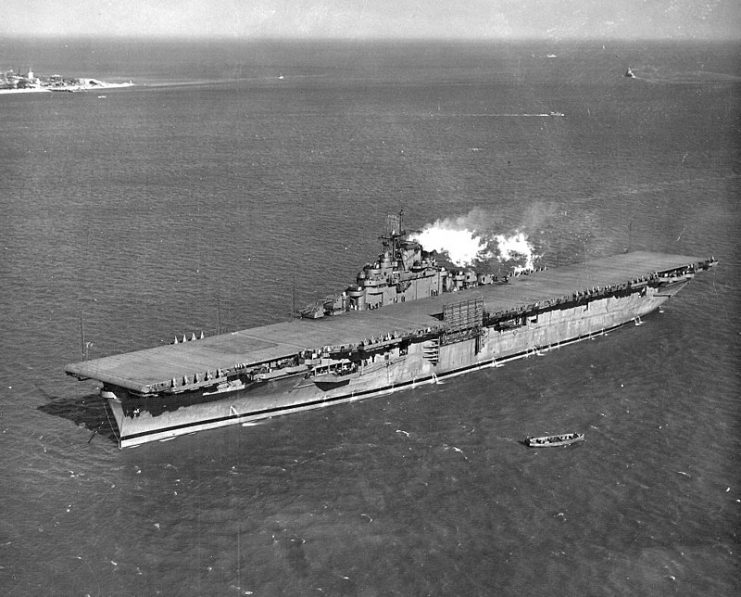
Also, the Essex class featured additional air and surface radars to warn of approaching threats and to keep track of friendly forces.
Essex-class ships carried 2,300 personnel. The ships had eight boilers that operated at 850 degrees and turned four steam turbines to generate electrical power and propulsion. The ships were capable of hitting 33 knots at full power.
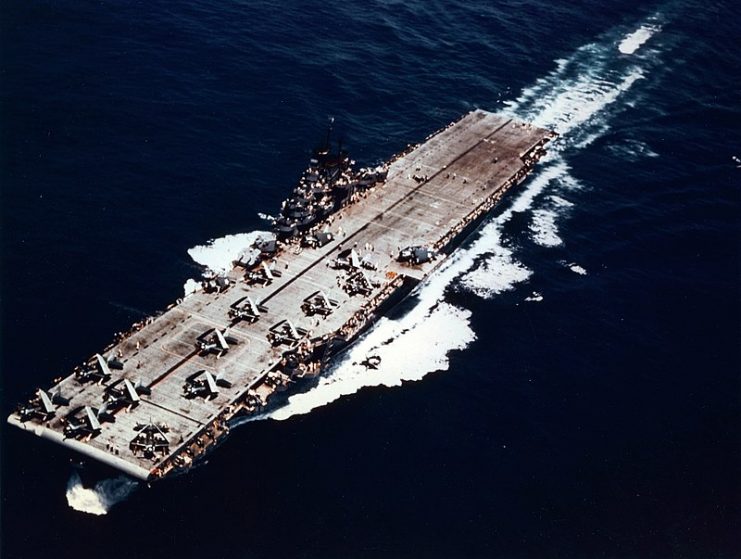
The real fighting advantage came from the new aircraft that were carried on Essex. The F6F Hellcat finally gave the US an advantage over the A6M Zero which was maneuverable but fragile. The SB2C Helldiver was fast and could carry up to 2,000 pounds of bombs internally plus another 1,000 pounds under the wings.
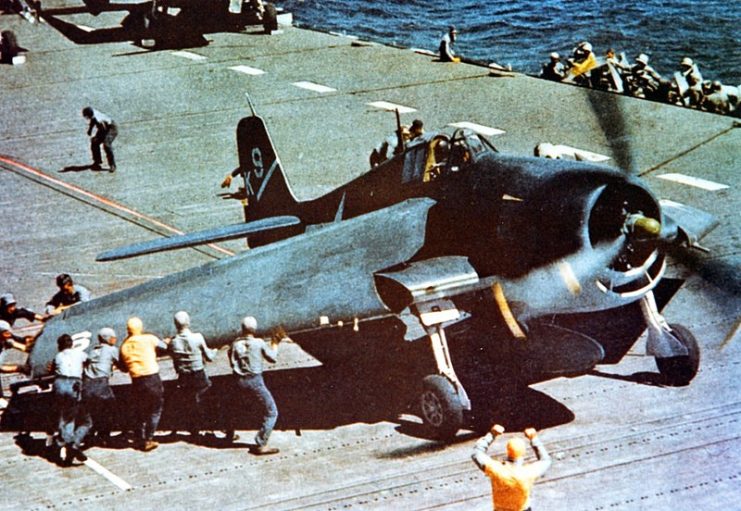
The TBF Avengers carried three-man crews to launch torpedoes or hunt submarines and other threats with their onboard radars. Air groups usually contained two squadrons each of Hellcats and Helldivers and another squadron of Avengers.
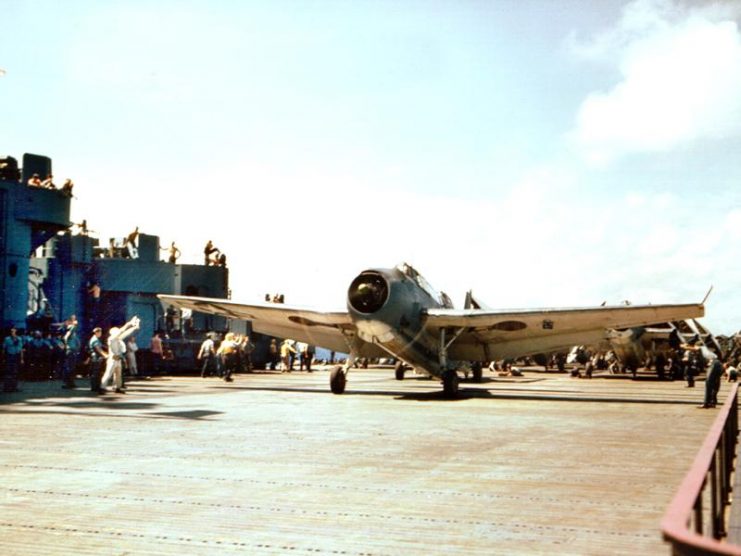
The size of Essex allowed for two full squadrons to prepare for takeoff on the deck while a third warmed their engines on the open hangar deck. As the airplanes increased their weapons loads they made more use of the two or three steam catapults in order to reach the speed needed for takeoff. The Essex-class carriers carried 240,000 gallons of aviation fuel to supply the planes.
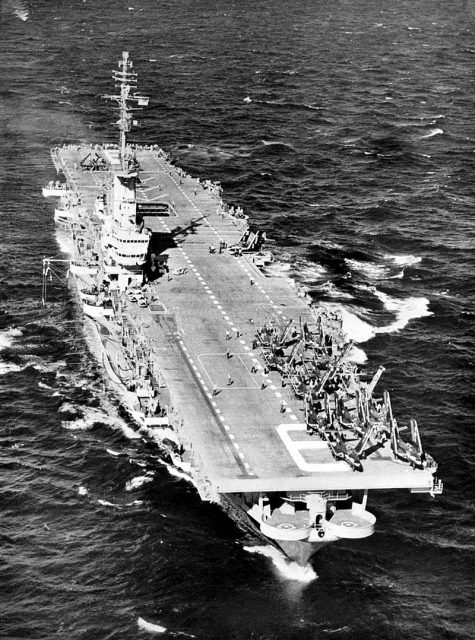
In 1943, Ticonderoga became the first of the new long-hull Essex carriers. The new style included a bow design that allowed the newer ships to handle rough weather more easily. The newer ships also featured more anti-aircraft guns and better radar.
Several other changes were made to the design which helped the ships better survive battle. Over time, the Essex-class ships received constant improvements, until no two ships in the class were the same.
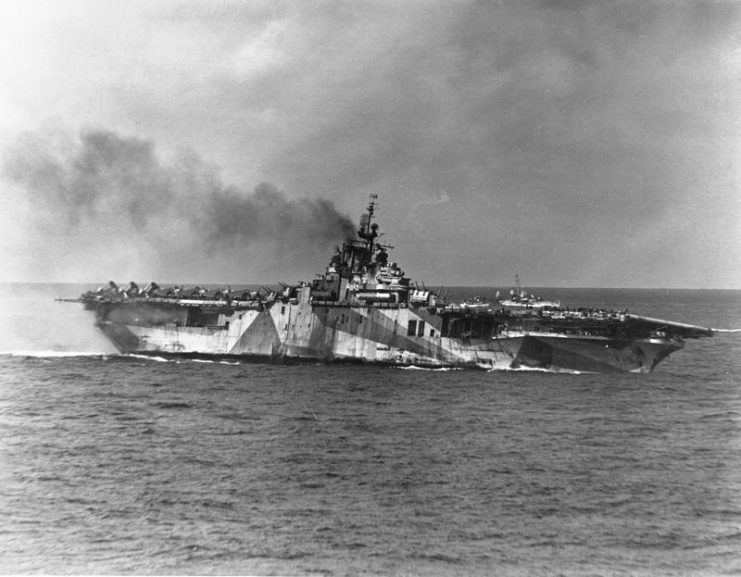
During World War II, the Essex class began service as floating airstrips used to launch assaults on Japanese islands. In June 1944, six of the Essex-class vessels participated in the Battle of the Philippine Sea. They shot down around 600 enemy aircraft and sank three carriers. By contrast, the US lost 123 planes and no ships.
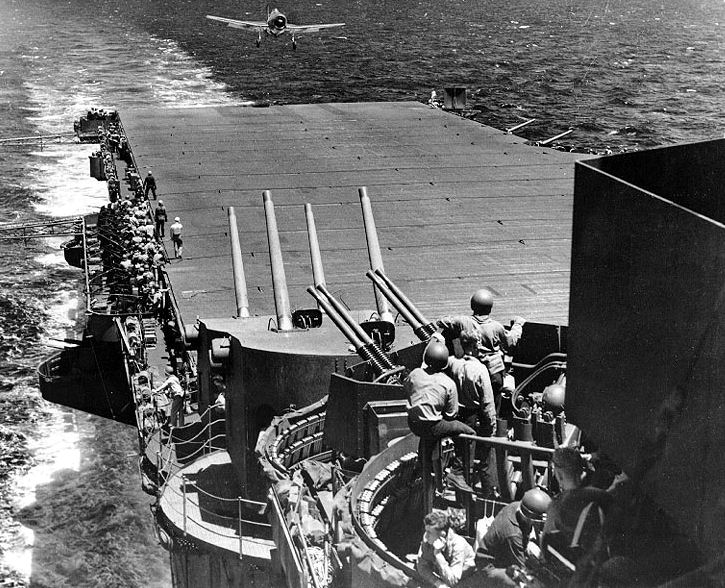
In October 1944, four Essex-class carriers fought off three separate Japanese fleets in the Battle of Leyte Gulf. It was the largest naval battle in history. During it the Japanese ship Musashi, the largest battleship ever built, was sunk. The Essex-class ships all survived the battle without incident.
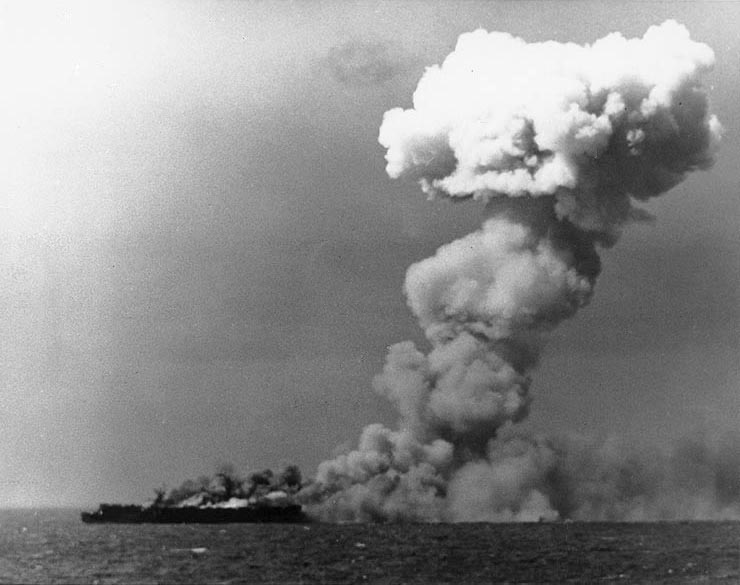
The Japanese were finally able to get through the Essex class’s defense systems by intensifying their kamikaze attacks. USS Bunker Hill was hit by two Japanese Zeroes which were carrying bombs. The explosions killed 390 crewmen but the ship was able to return to Pearl Harbor under her own power. USS Intrepid survived being struck by four kamikaze pilots.
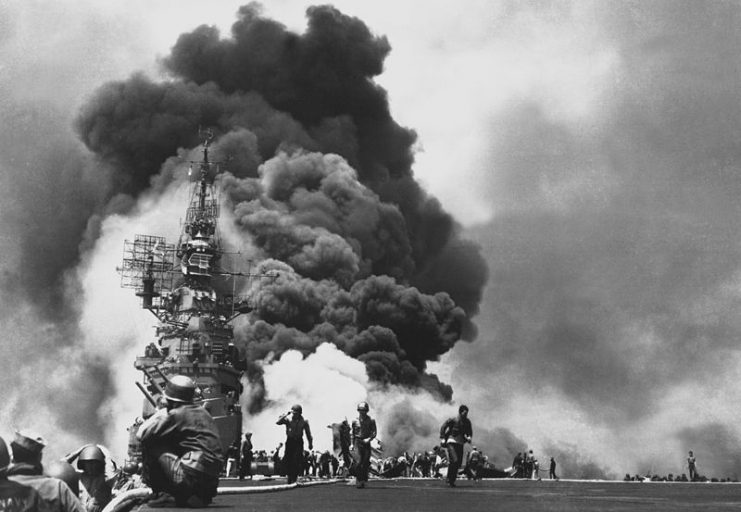
Read another story from us: Kamikaze Survivor: USS Bunker Hill CV-17 in 30 Photos
USS Franklin was hit with two armor piercing bombs which set off a chain reaction of exploding ammo and burning fuel. Over 800 crewmen were killed but the captain managed to return to port. It was the largest number of casualties onboard a US Navy carrier in WWII that wasn’t itself lost at the same time.
At the end of the war, not a single Essex class carrier had been lost. They were a major part of the US victory in the Pacific during World War II.
